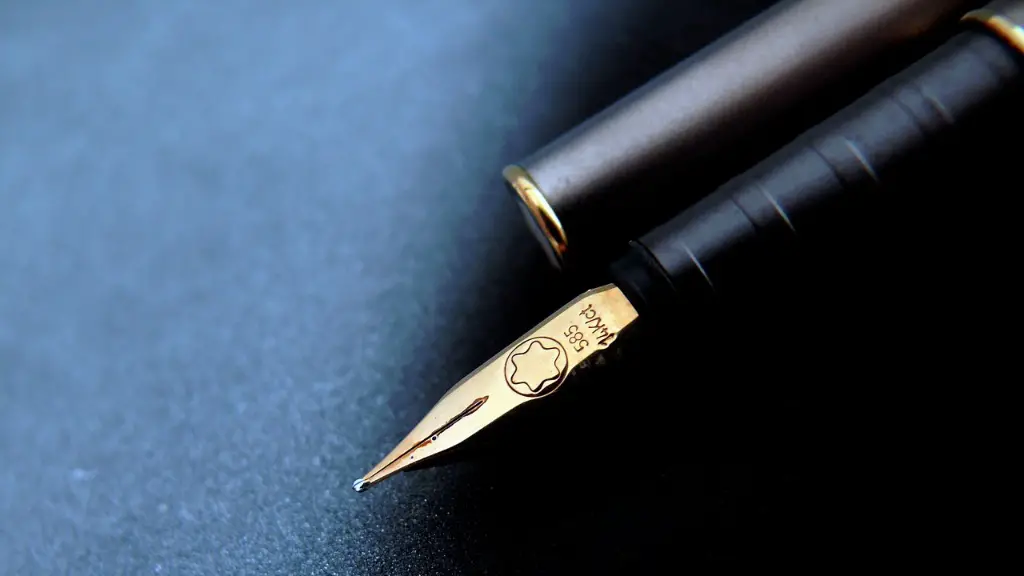Why is Symbolism Important in Poetry?
Most often, in poetry and literature, the symbol is used to evoke ideas and feelings that exceed their literal meanings. Symbolism is the use of symbols to signify ideas and qualities by giving them a meaning that is greater than the literal meaning of the objects or characters used to represent them. The symbol often serves as an underlying theme, not just a single message, making it an important tool that poets use to communicate their themes. Symbolism is heavily used in most poetry for its ability to expand the writer’s expression of ideas.
Symbolism allows any subject or genre to be expressed with a much wider range of emotion. This is especially true within the sentimental poetry of the romantic period, where symbolism was used as a way of communicating a feeling that words may never be able to express completely. Symbols are a way of connecting to readers by creating a visual language. The use of symbols is also a way of conveying a sense of mystery and secrecy that readers can find captivating.
Symbols are used to create an emotional impact beyond what is stated literally. In many cases, these symbols serve as gateways for readers to interpret the poet’s message more deeply. They can be used to explore a particular idea more fully, or to hint at a hidden meaning or message. Images of birds, for example, could mean anything from freedom and hope to sadness and grief.
Symbolism in poetry also gives readers the opportunity to draw their own interpretations from the text. This encourages readers to think critically and form their own opinions about the message of the poem. Through symbols, poets can impart a multilayered meaning to their works, which can cause readers to make fresh interpretations even after re-reading.
Symbolism adds a unique level of meaning and depth to any piece of writing, and can be used to augment and enhance the ideas of the writer. The use of symbolism allows writers to create a more vivid and meaningful message, while readers are able to interpret the underlying ideas that may not be obvious in the surface text. This adds an extra layer of beauty to any form of literature, making it a key element that can draw readers in.
Symbolism in Nature
Sometimes, symbols are related to nature and animals in literature. This is because nature has so many meanings that can capture a wide range of feelings and emotions. In some cases, the author may use a specific animal as a symbol for an aspect of the story. For example, a hawk may symbolize freedom and power, or a deer may stand for gentleness and innocence.
Seasonal symbolism is also used to add more depth and complexity to the text. Each season can serve as a metaphor for a human emotion or experience. For example, winter can signify death and sadness, and spring can be an image of rebirth and renewal. By using seasonal symbolism, poets can imbue their work with a greater level of insight and emotion.
If a poet chooses to use symbolism in nature, it is essential that the symbols chosen accurately represent the mood of the poem and what the poet wants to express. Often, the poet will select an image that is associated with the culture in which the poem was written, or that has specific cultural connotations. In many cases, the symbols will be related to spiritual or religious ideas.
Using the natural world as a symbol allows the poet to tell their story with more vividness and greater detail. Additionally, it allows the reader to draw real-world connections to the artist’s message. By referencing real aspects of nature, the poet can create a much more memorable experience.
Symbolism in Mythology
Mythology is another great source of symbolism in poetry. Unlike nature, mythology gives poets a greater degree of flexibility when they are trying to express their ideas. Mythological figures and stories often come with specific cultural connotations that can help strengthen the writer’s narrative. For example, if the poem is about a man struggling to find his place in the world, the writer could draw upon the story of Hercules and his 12 labors as a symbolic representation of the man’s journey.
The symbolism of mythological figures and stories is often open to interpretation by the reader. It allows the artist to create a complex set of relationships and ideas within the poem without having to explain them all in the text. This often adds a layer of depth that can draw in even the most casual of readers.
When using mythological themes, it’s important to find a balance between the familiar and the unknown. Introducing too many mythology-based symbols can confuse or alienate readers. Instead, writers should pick symbols that they think will best convey their message while still making sense to the reader.
Mythology is a great source of inspiration and meaning in literature, and it can be used to enhance almost any poem. Writers should be careful when selecting mythological symbols, however, as they should always strive to convey their idea in a way that is both meaningful and comprehensible.
Symbolism as a Way of Communicating Complex Ideas
Symbolism is also used in literature to communicate complex ideas without having to list out every detail involved. By using symbolism, poets can create a richer, more powerful image without having to explain every intricate detail. This allows for more abstract imagery that creates an immersive experience for the reader.
A symbol can be used to represent almost any idea, from love and betrayal to truth and justice. Through the use of symbols, poets can communicate an idea in a more succinct way, without having to cram complex thoughts into too few words. This allows them to communicate a sense of emotion and power that could otherwise be hard to capture.
Symbolism can also be used to represent abstract concepts and philosophical ideas. For example, a poet may choose to use a sunflower as a symbol of happiness, or a lightning bolt as a representation of unpredictability. By using symbols, writers can craft intricate, thought-provoking images that help convey the deeper, more complex ideas of the poem.
In the end, the key to successful symbolism in a poem is to choose symbols that will evoke the specific emotions and ideas of the poet without being too abstract or confusing to readers. Symbols can be a powerful tool for writers if used correctly, and can take any poem to the next level.
Symbolism and Metaphorical Language
Symbolism is closely linked to the use of metaphors. Metaphors are when a comparison is made between two things that are not actually connected. This comparison is used to create a vivid and emotive image that can be used to represent a concept or idea. For example, a poet may compare a heart to a cage in order to convey the idea of a person being imprisoned by their own emotions.
Metaphors are often used to express complex emotions and relationships in a simpler form. This allows readers to connect to the text and to the characters in a more meaningful way. In addition to expressing complex thoughts, the use of metaphors can help to create a more poetic style of writing that is more enjoyable to read.
The use of both symbolism and metaphor is essential to creating vivid and emotive poetry. Both allow the poet to communicate complex ideas without having to fill up pages of text, and can help create an immersive experience for the reader. Symbols and metaphors often come together to create powerful images that help demonstrate the poet’s message in a succinct and meaningful way.
Symbolism is an integral part of any successful piece of literature. By combining symbols with metaphors, a writer can create vivid images that will help capture the attention of readers and compel them to explore the greater depths of the poem. Ultimately, symbols and metaphors are essential tools for any poet looking to create powerful, emotionally-charged works of art.
Using Symbolism to Evoke Emotions
Symbols are often used in literature to evoke a variety of feelings and emotions in readers. This is especially true in poetry, where symbols are often used as a tool to convey the writer’s feelings and ideas. Symbols can be used to evoke feelings of regret, nostalgia, anger, love, and more.
By using symbols that are related to the culture in which the poem was written, the writer can create a more immersive experience for the reader. Symbols related to both nature and mythology can be especially powerful in this regard, as they often come with unique cultural connotations that allow writers to create images that are both meaningful and evocative.
Symbols can also help establish a specific theme or tone within a poem. For example, a poet may choose to use images of birds to illustrate a sense of freedom and escape, or a storm to represent heartache and sorrow. This allows writers to add a sense of emphasis to their works, and serves as a great way to captivate readers.
In the end, symbols are one of the best tools that writers have for expressing complex ideas and emotions. By carefully selecting symbols and metaphors, writers can create works of art that are profound and captivating.
Symbolism As a Way to Unite Readers
Finally, symbols can be a great way for poets to unite readers from different cultures, religions, and backgrounds. By using symbols that have cultural connotations, writers can add a layer of shared understanding that encourages readers to connect with one another. This is especially true when symbolism is combined with imagery, as this allows poets to create a tangible image that readers from all backgrounds can relate to.
The use of symbolism can also help to broaden the audience of a poem. By combining religious, cultural, and mythological symbols, poets can make their works more accessible to wider audiences. This can result in a poem that is both informative and entertaining to a diverse range of readers.
Symbolism can also help to bring out the beauty of a language. By incorporating symbols, writers can express their ideas in a way that is more creative and engaging than plain language alone. This is especially true when combining mythology and metaphor in a text, as this can create a complex and emotive image that allows for a more fulfilling reading experience.
Overall, symbolism is an important tool for writers, especially those in the literary world. By using symbolism, poets can draw readers in and create works of art that are both meaningful and enjoyable.





